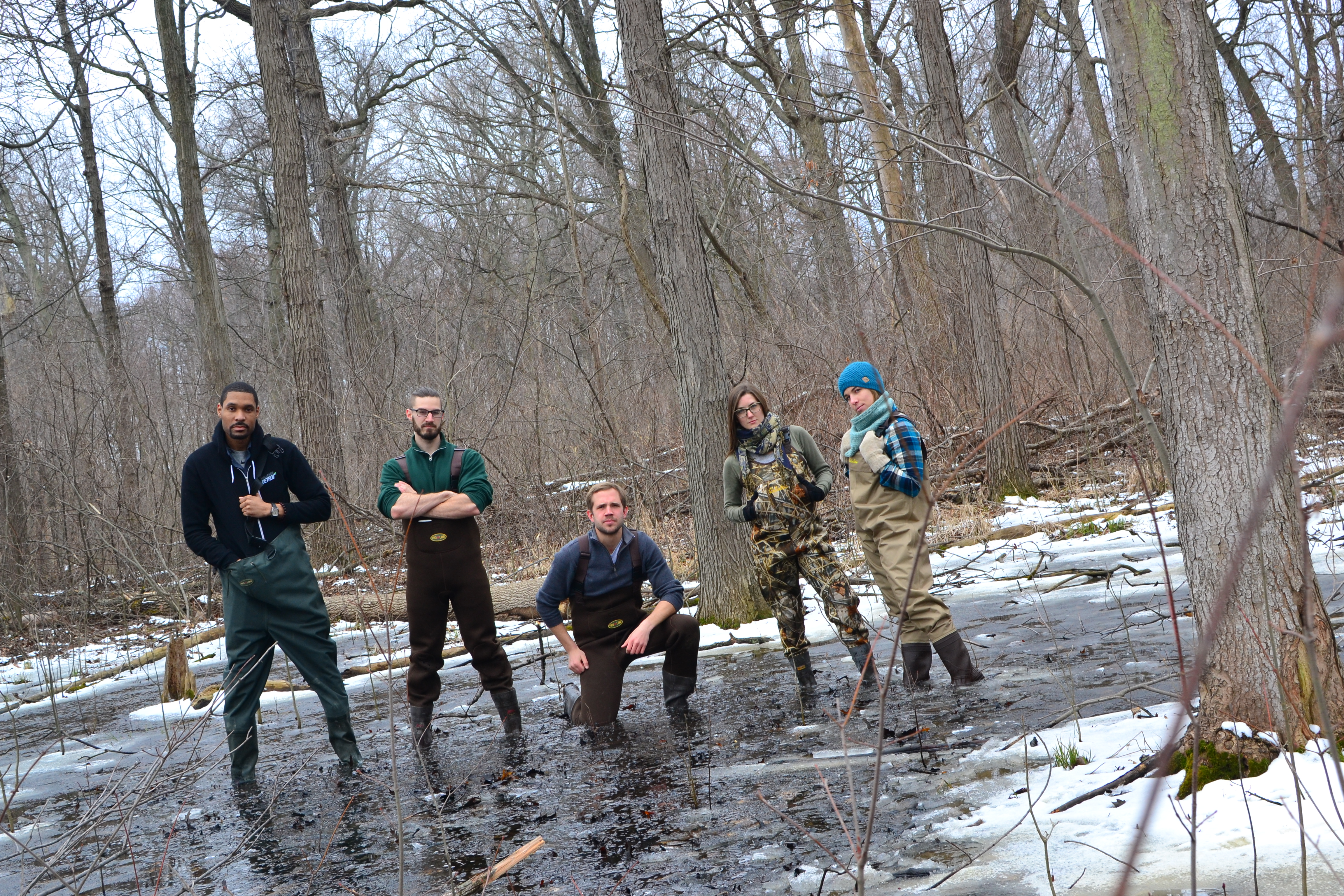Our fourth Challenge Detroit project was with two partners: Ecoworks and the Belle Isle Conservancy. I was excited to be placed on the Belle Isle Conservancy team, even more specifically on the Flatwoods team with a few of my closest friends. Our task was to capture the stories of certain parts of the beautiful island, our location was the Wet-Mesic Flatwoods. Since I work with the Detroit Grand Prix, it felt fitting to me to dive into the natural side of the island and better understand its connection ecologically, as well as listen to the people that often protest the race we host each year. What I learned can be captured in the speech I gave during our presentation:
“You’ve heard from three other teams that have shared stories about well-known landmarks here on Belle Isle: the aquarium, the conservatory, and the Scott Fountain.
Yet there is more to this island than the built development we’ve come to know and love. It covers almost 200 acres on the eastern side and is home to oaks, maples, and a wide variety of other marsh-loving plants. Myself as witness, the wet-mesic flatwoods isn’t just some swamp.
Engaging with the community looked a little different, because our community was among the trees. Within its natural setting, tucked away from the hustle and bustle of the MotorCity, we danced.
By that I mean, we did the wader dance. Imagine five people standing a foot deep in water, with a uniform of dri-fit camo suspenders connected to oversized, at least for some of us (6 foot something Jeff not included), rubber boots.
*Do the wader dance. Do the wader dance.*
But first, we found those people who had likely already danced in their past – community volunteers, the DNR, forest frequenters, and the casual wanderer:
- We listened to the Stewardship team detail the importance of invasive species removal
- Made friends with the DNR guy to get an insider’s view of the dead oak trees being helicoptered off the island
- And compared the paved trail to the unpaved flatwoods floor, while contemplating what we through best for the forests, fueled by deep discussions on the need for holistic development and conservation plans here on the island.
As Andy, a land architect stated, “[the forest] is going to give this park a lot of integrity for a lot of years to come[…]to be able to have a natural system like this, for the urban area, is just so critical.”
To better understand that criticality, we looked toward the comfort of my own home. My roommate, Liz, is a transplant from Port Huron who loves the Pupuseria down the street, but is a bigger lover of the outdoors. Let’s hear her story…
[Check out the video below!]
Liz reminds us that economically, socially, and ecologically life is a balance.It’s that human connection to nature. The human connection to Detroit. Detroit’s connection to nature.
Belle Isle’s wet-mesic flatwoods offers solace, not only as a migratory path for birds or guarding the state’s largest Shumard Oak, but for everyday people. It’s a place for us too.
To round it out, I’d like to quote a quite poetic teammate of mine, Peter Walle, for you to think about:
The revitalization of a forest space mirrors Detroit’s rise, particularly from a neighborhood-centric lens. When conserving a forest ecosystem, you validate the need for ecological biodiversity and recognize that place and space in its most unhampered form has power.
I’m looking forward to the next time we can harness that power together and dance. Wader dance, of course.”

